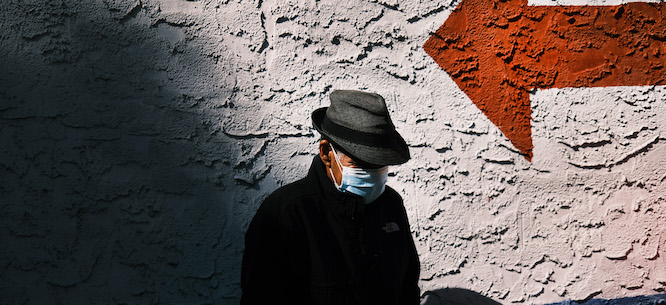Behind the Mask
Behind the Mask
We should be ashamed that there are so many in food lines across the country. Unless dramatic action is taken, the lines are about to get much longer.

We are in the midst of the first service-sector-led recession in U.S. history, a symptom of both the changing shape of the economy and of the nature of the coronavirus itself. The impact of this downturn has been sharply unequal. Those at the top have mostly recovered, while those at the bottom struggle in depression-like conditions that will only worsen as state and federal aid continues to stall. New unemployment is concentrated in low-paid jobs, which are overwhelmingly held by women and people of color.
Because of these facts, you have to dig below the official numbers to grasp the economic devastation. In November the official unemployment rate was 6.7 percent, or 10.7 million workers. But this is a dramatic undercount. The Economic Policy Institute has documented over 26 million workers, 15.5 percent of the workforce, who are either out of work or experiencing a drop in hours and pay.
The Bronx, home to the largest concentration of service workers and the highest COVID-19 infection rate in New York City, has a real unemployment rate near 40 percent. The man in this photograph, waiting on a food distribution line, is one struggling person among many in the borough, in the city, in the country. We should be ashamed that there are so many in lines like this all over the country. Unless dramatic action is taken, the lines are about to get much longer.
Mark Levinson is Dissent’s book review editor.





